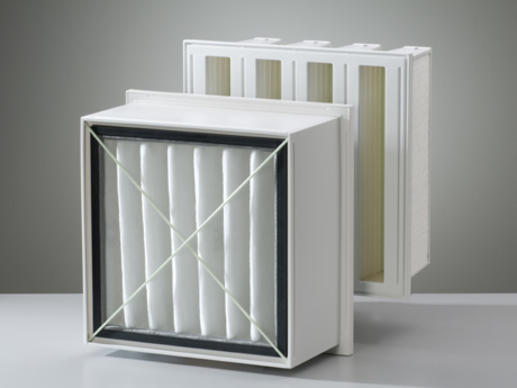
For air intake filtration of turbomachinery
EMW®'s GT pocket filters were developed specifically with the goal of achieving low pressure drops and therefore high energy efficiency.
The aerodynamic intake guides on the intake side of the filter are a key feature reducing the pressure drop in operation. The individual filter pockets are made up of a progressively structured synthetic filter medium. In addition a continuous foamed-in-place seal is applied to the joint between the filter and the plastic frame on the outlet side.
The filter is extremely rugged and maintains its shape even under pressure fluctuations or when the turbine is shut down. Highest strength is ensured by tubular spacers, outlet-side reinforcing grids and the airtight peripheral seal.

Can be stopped and rotated!
Standards:
- 592 x 592 x 600 mm
- 490 x 592 x 600 mm
- 287 x 592 x 600 mm
| Filter type | GT50 KR-8/600 SG | GT60 KR-8/600 SG | GT70 KR-8/600 SG |
|---|---|---|---|
| Number of pockets | 8 | 8 | 8 |
| Dimensions | 592 x 592 x 600 mm | 592 x 592 x 600 mm | 592 x 592 x 600 mm |
| Filter class according to EN 779 | M5 | M6 | F7 |
| Nominal air flow rate [m³/h] | 3400 | 3400 | 3400 |
| Average Efficiency of 0.4 µm particles | ≥ 40 | ≥ 60 | ≥ 80 |
| Initial pressure drop | 65 | 65 | 100 |
| Filter type | GT50 KR-8/600 SG | GT60 KR-8/600 SG |
|---|---|---|
| Number of pockets | 8 | 8 |
| Dimensions | 592 x 592 x 600 mm | 592 x 592 x 600 mm |
| Designated Filter Group ISO 16890 | ISO ePM 10 55% | ISO ePM 10 65% |
| Nominal air flow rate [m³/h] | 3400 | 3400 |
| Initial pressure drop | 60 | 65 |
| Filter type | GT60 KR-8/600 SG |
|---|---|
| ISO 29461-1 | ISO T5 |
| Number of pockets | 8 |
| Nominal air flow rate [m³/h] | 3400 |
| Initial pressure drop | 65 |
*The data are average values subject to tolerances due to normal production fluctuations. The figures are only suitable for comparison with those of other products tested according to the same standard.
**Dust holding capacity was determined according to EN 779 up to a final pressure differential of 450 Pa. Operation to higher final pressure differentials results in increased dust holding capacity.
All data given are based on test results determined according to EN 779 or ISO 16890. The data are average values subject to tolerances due to normal production fluctuations. The figures are only suitable for comparison with those of other products tested according to the same standard. Dust holding capacity according EN 779 is measured till a final pressure drop of 450 Pa, whereas according ISO 16890 the dust holding capacity is measured till 300 Pa. If higher final pressure drop levels are suitable, the dust holding capacity will be accordingly higher.